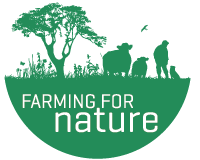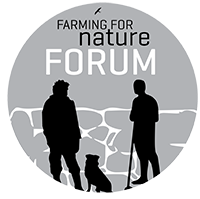Grasslands
Grasslands cover a large part of the Irish countryside. Depending on the underlying soils and geology, they vary from freely draining and dry to waterlogged and poorly drained. These diverse grasslands can be some of the most biodiverse habitats in Ireland.
In comparison to monocultural, intensively managed pastures, semi-natural (semi-improved) grasslands can store more carbon, provide more feeding and breeding grounds for birds, insects and mammals, and can better regulate soil drainage, thereby mitigating against the effects of floods and droughts. More diverse pastures can also provide a wider range of vitamins, minerals and natural anthelmentics for grazing livestock. Management plays a major role in how biodiverse our grasslands are. Managing even 5-10% of your grasslands for biodiversity can make a huge difference to wildlife. Where they remain, old hay meadows and semi-natural (or ‘more-natural’) grasslands can support particularly high levels of biodiversity.
Actions on the Farm
AVOID OVERGRAZING OR POACHING
- Increase the time fields are left to rest between grazings to allow them to fully recover.
- Alternatively, reduce the grazing intensity by reducing your stocking density.
- Preventing overgrazing and poaching reduces the open space needed in the grass sward for problematic weeds to colonise.
AVOID DAMAGING THE SOIL
- Avoid using heavy machinery on the soil in or after wet weather as this compacts the soil and damages its structure.
- Minimise or avoid chemical inputs (i.e. fertilisers and pesticides). These chemicals will damage the health of your soil by reducing its natural biodiversity (fungi, microbes, earthworms etc.).
ALLOW AREAS OF LONG GRASS TO GROW
- Fence off certain areas or reduce your stocking density to let taller grass grow and for longer into the season.
- Maintain a diversity of grass lengths to provide a variety of habitats for insects, birds and small mammals.
- Allow longer grass to grow along field boundaries or hedgerows to create nesting habitats for bumble bees.
- If you are cutting old meadows for winter feed, consider cutting for hay (weather permitting) or even haylage rather than silage. Cutting hay or haylage allows more seed to remain on site, replenishing the seed bank. Try to harvest as late as possible to allow flowers to set seed (at least until after mid-July, if possible early Autumn). In previously fertilised fields, it’s important to harvest the field (rather than mulching/topping), as taking the crop off will reduce the nutrient loading and encourage more biodiversity over time.
- Other practices like Holistic Planned Grazing may be a way to manage your grasslands through a more in-depth grazing regime. More info below.
ADD POLLINATOR FRIENDLY PLANTS
- Planting species such as clover will naturally increase the nitrogen levels in your soil while also providing feed for pollinators.
- If your grassland is already filled with native wildflowers, protect them! Don’t reseed areas of existing wildflower meadows; naturally occurring flowers usually provide better food for locally occurring pollinating insects than bought in seed mixes.
- Further detailed advice on managing wildflower rich meadows can be found in the links below.
MANAGE WATER FOR WET GRASSLANDS
- Plan and manage to have enough water for flood pools in the winter. Options might include not draining off naturally occurring floods or using sluices and dams to move water around and create more pools.
- Keep wet grasslands damp into July and August. These wet grasslands will be important for many species including charismatic breeding ‘wading birds’ such as lapwing, snipe and curlew. Old drains can be blocked to ‘slow the flow’ of water off the land.
- Graze the area as needed to stop plants such as willow from colonising your wetland and drying it out. To avoid damaging the nests of ground nesting birds, only graze after the bird-breeding season (March to July/August).
REDUCE LIVESTOCK ACCESS TO RIVERS AND WATERWAYS
- Fence off watercourses to prevent bank erosion or water pollution from livestock – provide alternative water sources.
- Allow native vegetation to grow along the riverbank to stabilise it against erosion.
MINIMISE ANTI-PARASITIC DRUG USE
- Dung is a really important habitat for many insects and fungi. Dosing livestock with anti-parasitic drugs will kill off species of insect that are crucial to dung recycling, such as dung beetles, as well as many insects eaten by birds. Insect eating birds that were once abundant around the farm, such as swallows and house martins, are becoming rare because (amongst other factors) the insects on which they once fed are now getting scarce. Consider alternative methods to maintain a low worm burden in your herd and pasture (e.g. rotational grazing) and always use faecal dung tests to determine if dosing is really necessary.

This below short video outlines how Kildare-based Farming for Nature Ambassador, Kim McCall, manages the grassland on his farm. The video focuses on the benefits that good grassland management can provide for the farm, the stock, the farmer/family and for nature.
See our Best Practice Guidelines on Species rich Grassland here
See here for our information on indicator species which tell you what your soil is trying to.
For more information on how to farm for nature, search by
SECTOR HABITAT SEASON FAQS
FURTHER RESOURCES EMAIL US ANY SUGGESTIONS

